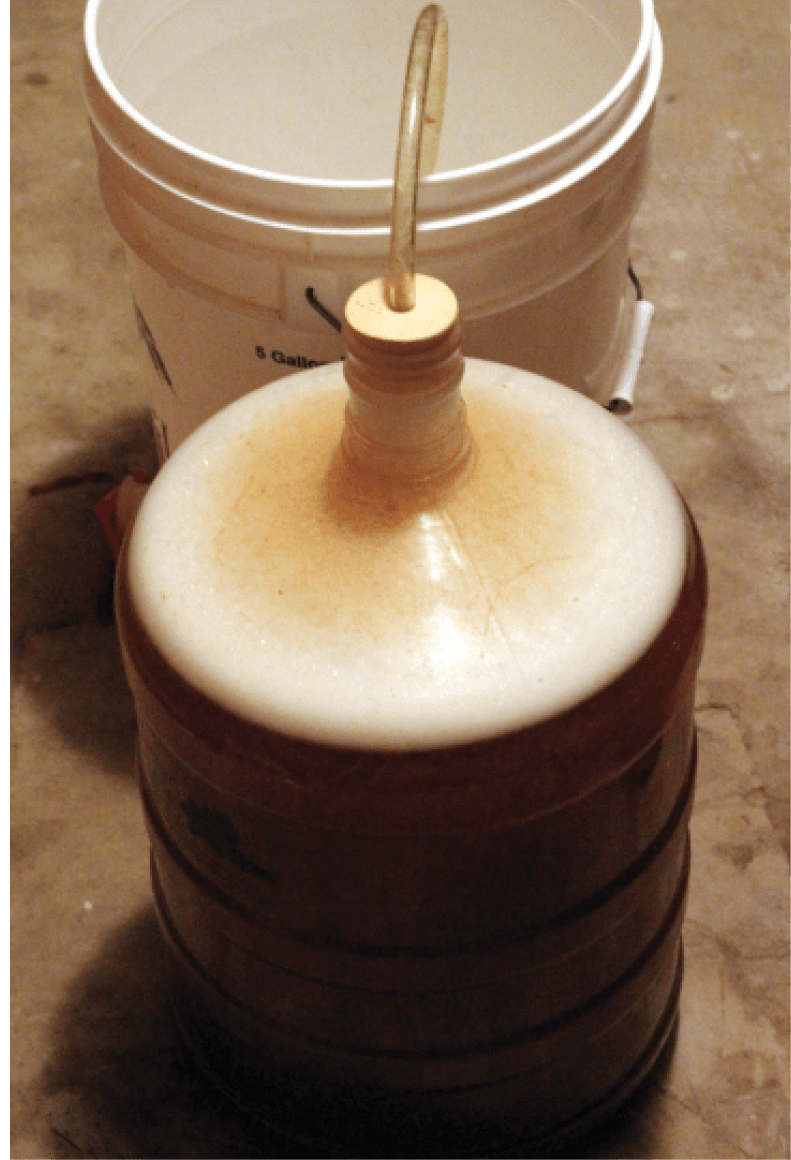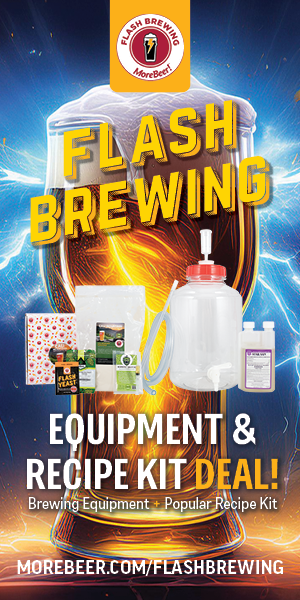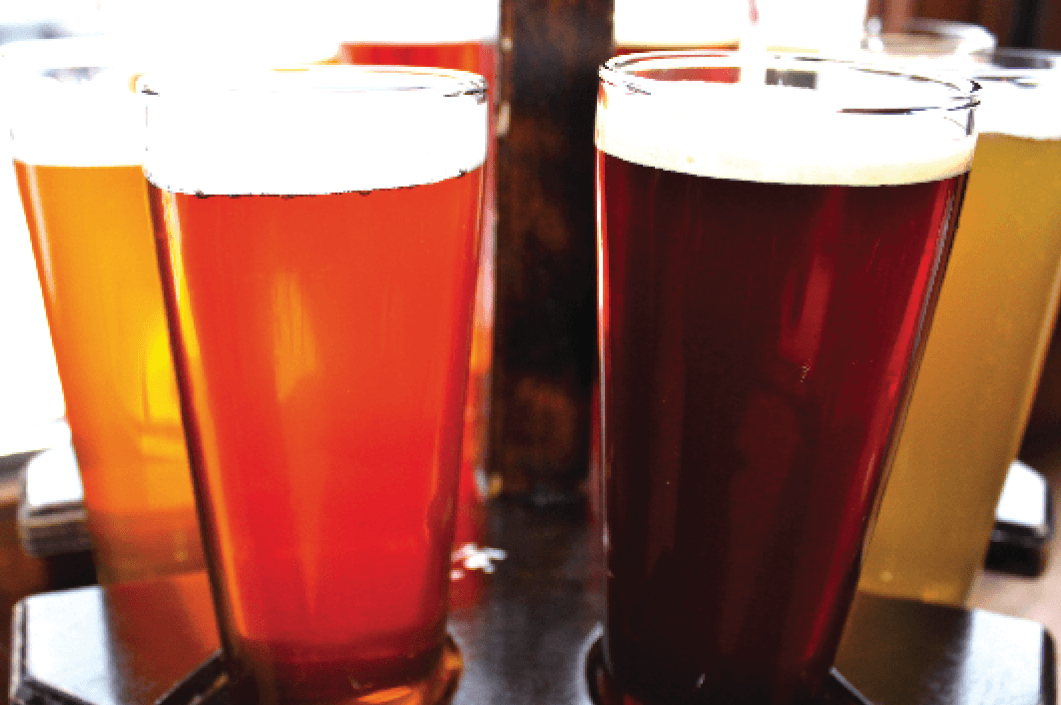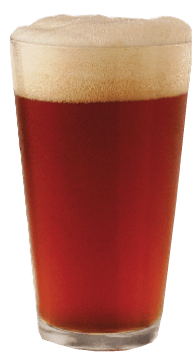All About Brett

In 2012 Chad Yakobson of Crooked Stave Artisan Beer Project in Denver, Colorado included me in an email chain of 20 Brettanomyces-and-bacteria-focused brewers. Chad’s hope was to get the group to agree on a catch-all term (equivalent to “ale” or “lager”) for the third-kingdom of beer. “Sour” isn’t universally appealing and doesn’t cover beers fermented without lactic acid bacteria. “Funky” is the opposite: Missing on refreshingly clean kettle-soured gose and Berliner weisse. My favored term, “mixed-fermentation” doesn’t apply to 100% Brettanomyces fermentations.
How about “wild?” While true for spontaneous fermentations, it is problematic for most Brettanomyces. This arboreal yeast has been living in beer barrels since before Claussen determined it was responsible for the “stale” flavor of leather and fruit that was so desirable in vatted English ales. “Wild” doesn’t describe Brettanomyces purchased in pure-culture vials or pouches from your local homebrew store (or directly from a yeast lab in Nashville or the San Francisco Bay Area). Brettanomyces may not be the exactingly-groomed partner that Saccharomyces is, ready to do your bidding and then go away, but the range of fruity and funky flavors it produces can be wildly captivating!
In the end there was no consensus. These beers are not a cohesive group (even compared to lagers which range all the way from Czech Pilsner to eisbock), and as a result there isn’t a single term that manages to capture the limitless combinations of process, flavor, and microbe!
The history of Brettanomyces runs through lambic, porter, IPA, Claussen, Orval, Bouckaert, Arthur, Cilurzo, White, Logsdon, Yakobson, Goodwin et al. If you are interested read Jeff Sparrow’s Wild Brews, Mitch Steele’s IPA, my American Sour Beers, and Milk the Funk’s wiki. I’ll just say that I owe a debt to all those who have shared their beers, research, and microbes with the brewing community!
There are dozens of Brettanomyces isolates available from a dozen yeast labs. Gone are the days when an Orval clone was the only reason a homebrewer needed Brettanomyces bruxellensis! Brewers are fermenting wort with Brett as more than just a novelty, blending its aromatics with hops, spices, and assertive malt bills. With increased interest in Brettanomyces beers, research has tested anecdotal best practices.

When Brett Isn’t Brett
One of the more recent happenings in the storied history of Brettanomyces occurred in late-2014. Three years earlier, White Labs had released WLP644 Brettanomyces bruxellensis var. Trois (a not so subtle reference to Brouwerij 3 Fonteinen, and the Brettanomyces bruxellensis var. Drie isolated from their Geuze Cuvée J&J Blauw by Brewing Science Institute). I fermented a couple of beers with WLP644, including pure-culture and secondary fermentation, and had no reason to doubt that it was a mild Brett strain; it is fruitier than funkier, but creates a pellicle, and produces crushed pineapple aromatics when interacting with American hops! My homebrewed test batch for Modern Times’ Neverwhere fermented with WLP644 converted nicely into the slightly funkier commercial batch with BSI Brett Drie (the brewers supplemented with Brettanomyces claussenii for the most recent batch, resulting in an even juicier flavor).
Brettanomyces covers a huge range of phenotypes, including a variety of attenuations, secondary metabolites, and tolerances making it hard to positively identify what is or isn’t Brett from brewing and tasting alone. Maybe it shouldn’t have been as shocking when Lance Shaner of Omega Yeast Labs shared genetic analysis that suggested “Brettanomyces Trois” was actually Saccharomyces! White Labs did their own test and confirmed that the ITS region of the strain’s ribosome was consistent with Saccharomyces. Thankfully, rather than discontinuing the great strain (as happened in a similar situation with Wyeast 5110 Brettanomyces anomalus in 2007) they rebranded it Saccharomyces “bruxellensis” Trois. At the same time, White Labs released WLP648 Brettanomyces bruxellensis var. Trois Vrai (“true”). This new strain has a phenolic edge, but many of the same qualities including strong primary fermentation, and tropical hop interactions (more towards passionfruit in my experience).
I relate all this information for two reasons: first, it illustrates that there is plenty of “borrowing” going on between yeast labs (living things are thankfully difficult to patent). Second, there are other microbes, especially from the smaller yeast labs, that have not been tested to confirm the species on the label. Even many of the names used by yeast labs (e.g., B. claussenii, B. lambicus) are no longer recognized by science. Rather than focus on taxonomy, I pay attention to the flavors produced and brewing characteristics (e.g., attenuation, alcohol/acid tolerance, influence of temperature).
Brett-ology
I believe the idea that Brettanomyces requires dextrins to create its myriad flavors is the biggest myth to tackle now that everyone understands that it is yeast not bacteria. Brett is the omnivore of the worty plains. Depending on the strain, it will metabolize glycosides from fruit, hops, and spices; the sugar trehalose released by autolysis; amino acids; cellobiose from wood; and lactose.
The flavors that Brett creates are derived mostly from activity on phenols from the malt and esterification of acids and alcohols. The lactic acid bacteria, especially Pediococcus, benefit from favoring alpha-amylase, which creates the dextrins it eventually converts into lactic acid. Anecdotally, fermentation of simpler carbohydrates by Brettanomyces increases ester production, which explains the fruitier flavors of 100% Brett compared to mixed fermentations.
The result is that I mash my Brett-no-bacteria beers towards the mid-to-low end of the saccharification range, 148–152 °F (64–67 °C). If you are an extract brewer, there is little reason to add maltodextrin to these beers (although most Brett is capable of fermenting dextrins up to nine-glucose-molecules long). A more fermentable wort reduces the risk of over-carbonation when bottling younger beer, which will allow you to enjoy the progression from fresh-to-funky!
The pH of the beer is a crucial factor in ester production. According to Chad Yakobson’s master’s thesis, higher concentrations of lactic acid reduce production of some of the more interesting aromatics like ethyl caprylate (pineapple and cognac) and ethyl caproate (apple and anise). This tendency is one reason to sour with slow Pediococcus rather than quick Lactobacillus when Brett is included.
Many of the funkier flavor descriptors thrown around such as smoky, Band-Aid®, horse blanket, etc. are phenols. In clean beers, the phenols usually encountered are imparted either by a POF+ yeast (“phenolic off-flavor” e.g., clove in hefeweizen, black pepper in Belgian ales), or malts dried over smoky fire. Brettanomyces has the ability to convert 4-vinylguiacol (clove) into funkier 4-ethylguiacol (4-EG). However, a phenolic brewer’s yeast strain is not required, Brett will relatively quickly complete the conversion itself from ferulic acid (and other precursors) to 4-EG. If you want to increase the funkiness of the finished beer, try starting your mash with a 15 minute ferulic acid rest at 113 °F (45 °C).
Lance Shaner conducted an experiment that refuted the oft-repeated notion that lower pitching rates result in a “more stressed” fermentation that produces a funkier beer. His results indicate that for secondary fermentation, ester production differs somewhat with pitching rate, but phenol production held relatively constant from 50,000 to 2.4 million cells/mL.
Best Practice is Practice
For secondary fermentations, Brett will eventually complete its task whether you pitch 1,000,000 or 100 cells per mL. (This is the reason sanitation and separate equipment for clean beers are so vital). The higher pitching rate speeds up the fermentation, but not close to the 10,000X difference in the number of cells! I prefer lower pitching rates in most situations to allow more time in that fun in-between zone where the character of the primary yeast is still apparent, before the Brett dominates. I pitch more cells for hoppy beers, where I need the Brett character to arrive before the hop aromatics fade.
To experience the transition from fresh-to-funky, follow the lead of Orval, which despite rumors to the contrary, pitches Brett at bottling. This makes split batches and sanitation relatively easy: use an eyedropper to dose 5-10 drops of dilute Brett culture into each bottle before capping. The risk with this technique is that for every 0.001 of carbohydrates fermented after bottling, yeast (Saccharomyces or Brettanomyces) releases 0.5 volumes of carbon dioxide. If you add enough priming sugar to achieve 2.5 volumes and the Brett lowers the FG from 1.005 to 1.002 the beer would contain a potentially dangerous 4 volumes of CO2. Luckily with a low pitching rate, thick bottles, and cellar-temperature storage you can open a bottle every few weeks and refrigerate the remainder if the carbonation reaches disconcerting levels.
Kegs are wonderful for Brett conditioning because they allow you to vent excess pressure. The beers I put on my dedicated non-Saccharomyces tap tend to be 100% Brett, fruited, dry hopped, or keg conditioned for a month or two to get the flavor where I want and then chilled to prolong that moment. I bottle most 100% Brett beers though because Brettanomyces continues to scavenge oxygen, meaning even a pale 5% ABV beer can be delicious at 10 years old!
Don’t be too concerned if you detect some strange notes early on in your fermentation. Tetrahydropyridines (Cheerios®, mousy) and phenols (plastic, medicinal) come and go in young Brett beers much like diacetyl or acetaldehyde, intermediary products in a young Saccharomyces beer.
100% Brett
Pitching rate is essential for 100% Brettanomyces fermentations because it needs to be ready to protect the wort from wild microbes. Brett grows more slowly than Saccharomyces and many commercial packages contain fewer cells than the lab’s brewer’s yeast cultures. A stir-plate is the ideal place for growth because Brettanomyces benefits from access to oxygen (which allows them to create considerably more energy per gram of sugar, and healthier cell walls). The drawback of free-access to oxygen is that oxygen allows Brettanomyces to produce acetic acid. Usually the concentration is low enough that the result is pleasantly tart once diluted by the wort; however, if you are particularly sensitive, consider decanting the starter. Acetic acid is also the key component of ethyl acetate, an ester that goes from pleasantly fruity at low levels to nail polish at just slightly higher.
For 100% Brett fermentations, the goal is to pitch at least an ale rate (1 million cells/°P/mL). This can be tricky because pitching rate calculators designed for brewer’s yeast are not accurate for Brett. White Labs and Yeast Bay vials contain 17.5 billion cells (up from 2.5 billion a couple years ago). For a 5-gallon (19 L) batch I start growing them in 0.5 L of wort before stepping to 2.5 L. Wyeast, East Coast Yeast, GigaYeast, and Bootleg Biology can be pitched directly if fresh, otherwise a single step to 2.5 L ensures a healthy fermentation. Once you are familiar with a strain, you can adjust the pitching rate to suit your goals. Complete attenuation should be reached in one to three weeks.
Select a strain that is an attenuative and aggressive fermenter (see below). Isolates from wine or aged beer often struggle to ferment relatively simple sugars, because they have adapted to thrive in a bottle or barrel without maltose present. Pitching a blend is often a good compromise; as the number of strains increases so does the likelihood of complete attenuation (although more strains increase the variability of the results, especially with repitching).
Some Brett strains (e.g., WLP645 Brettanomyces claussenii) produce fantastic flavors fermenting as warm as 85 °F (29 °C). However, I tend to trial strains by pitching around 65 °F (18 °C) and allowing them to ramp to 72 °F (22 °C) to ensure complete attenuation. Warmer fermentations produce more esters; while heat does not seem to reduce phenol production, esters distract, resulting in a fruitier less funky profile.
The biggest drawback to 100% Brett fermented beers is lack of body and mouthfeel. Most Brett strains are highly attenuative and do not release glycerol into the beer as Saccharomyces does. Glycerol adds mouthfeel, and is the reasons some saison strains create heft despite ultra-low final gravities. I try to compensate by adding ~125 PPM chloride to the brewing water, and incorporating grains high in protein: Wheat, oats, rye, spelt, quinoa, etc.
Post-Modern Brett
I fermented my first beers with Brett in 2006, relying on learnings from Jamil Zainasheff, Jeff Sparrow, and the descriptions of a couple beers Tomme Arthur brewed at a little brewpub called Pizza Port in Solana Beach, California. Back then, American brewers were just beginning to stray from the Belgian and English templates.
When I commented on the new “American Wild Ale” category introduced in the 2015 Beer Judge Certification Program Guidelines, my goal was not to rank which Brett flavors are the best, but to stress that balance and deliciousness are the primary goals! Neither pineapple nor horse blanket are preferred, but so too neither should rise to overwhelming intensity or clash with the other flavors of the beer. Describe your beer’s fermentation or character without worrying too much about broad classifications.
I’m glad that it is now common to walk into a brewpub, Homebrew Con, or a homebrew club meeting and sample a variety beers fermented with Brett that I never would have dreamed of! Hopefully in another ten years we’ll see these ideas continue to pinball, with brewers around the world selecting and adapting Brett to suit local tastes, equipment, and ingredients!
Commercial Brettanomyces Isolates and Blends
These are some of the commercial cultures that contain Brettanomyces without brewer’s yeast (i.e., fully domesticated Saccharomyces) or lactic acid bacteria.
Fruitier Strains
- East Coast Yeast ECY19 Brettanomyces custersianus*
- Omega OYL-210 Where Da Funk?*
- White Labs WLP645 Brettanomyces claussenii*
- Wyeast WY5151-PC Brettanomyces claussenii
- The Yeast Bay Lochristi Brettanomyces Blend*
Funky-Fruity Strains
- Bootleg Biology Funk Weapon #2
- East Coast Yeast ECY24 Brettanomyces nanus
- East Coast Yeast ECY30 Brettanomyces naardenensis
- East Coast Yeast ECY34 Dirty Dozen*
- GigaYeast GB144 Sweet Flemish Brett
- Omega OYL-211 Bit O’ Funk*
- White Labs WLP648 Brettanomyces bruxellensis Trois Vrai*
- Wyeast WY5526 Brettanomyces lambicus*
- The Yeast Bay Beersel Brettanomyces Blend*
Funkier Strains
- Bootleg Biology Funk Weapon #2
- Omega OYL-212 Bring On Da Funk
- Omega OYL-218: All The Bretts*
- White Labs WLP650 Brettanomyces bruxellensis*
- White Labs WLP653 Brettanomyces lambicus
- Wyeast WY5112 Brettanomyces bruxellensis*
- The Yeast Bay Brussels Brettanomyces Blend
* Recommended for primary fermentation
Modern Brett Recipes
Alsatian Funky Saison
(5 gallons/19 L, all-grain)
OG = 1.047 FG = 1.003 IBU = 24 SRM = 3.4 ABV = 6.1% (Including wine)
This beer is all about showcasing an alternative universe where Germany developed the saison and wild culture of Belgium. Rather than trying to get my hands on Alsatian Gewürztraminer grapes, I blended in a bottle of wine post fermentation. The fruity notes from the wine meld beautifully with the new German hops and lemony-funky-minerally Brettanomyces. The extended warm conditioning also provides an opportunity for the Brettanomyces to free aromatics from glycosides in the hops and wine, and to work under pressure to create flavors quickly so that the fresh hop nose is still evident.
Ingredients
- 9 lbs (4.1 kg) Rahr Standard 2-row malt
- 1.5 lbs. (0.68 kg) Great Western Superior flaked wheat
- 4 oz. (113 g) Weyermann acidulated malt
- 5.9 AAU Magnum pellet hops (60 min.) (0.5 oz/14 g at 11.8% alpha acids)
- 2 oz. (57 g) Hallertau Blanc pellet hops (hop stand)
- 2 oz. (57 g) Hull Melon pellet hops (hop stand)
- 2 oz. (57 g) Hallertau Blanc pellet hops (dry hop)
- 2 oz. (57 g) Hull Melon pellet hops (dry hop)
- ½ tsp. yeast nutrient (5 min.)
- ½ Whirlfloc tablet (5 min.)
- The Yeast Bay Saison Blend
- White Labs WLP644 (Saccharomyces “bruxellensis” Trois)
- Brettanomyces bruxellensis var. CB2 (Jason Rodriguez’s Cantillon isolate)
- Wyeast WY5223-PC (Lactobacillus brevis)
- 750 ml of German/French white wine (suggested: Trimbach Gewürztraminer)
- 1 cup corn sugar (if priming)
Step by Step
Single infusion mash at 148 °F (64 °C) for 75 minutes. Collect approximately 6.5 gallons (25 L) of wort in the kettle and bring to a boil. Boil 65 minutes adding hops, yeast nutrients and Whirlfloc according to the ingredient list. At the end of the boil, there should be approximately 5.5 gallons (21 L) in the kettle. Chill to 180 °F (80 °C) and add the hop stand addition, stir and let settle for 20 minutes. Chill to 65 °F, aerate the wort with filtered air or pure O2 and pitch with a starter of the yeast and bacteria. This recipe references my own personal mixed culture of yeast and bacteria, feel free to substitute in your own favorite mix of strains and cultures.
Ferment at 70 °F until the kräusen falls. Transfer to a keg or secondary vessel and add the dry hops and ½ cup of sugar. After several days, transfer to another keg or bottling bucket, add the bottle of wine and ½ cup of table sugar and allow to sit at cellar temperature for two months to carbonate and to allow yeast-wine interactions. Chill and serve when desired.
Can be bottled either after two weeks if the gravity is suitably low, or allow to ferment in a carboy until the gravity is stable before priming and bottling. Aim for 2.8 volumes of CO2 using a priming sugar calculator.
Extract option
Replace the pale malt, flaked wheat and acidulated malt with 4 lbs. (1.8 kg) extra light dried malt extract, 1.7 lbs. (0.77 kg) wheat dried malt extract and ½ tsp. lactic acid (88%). Stir the extract and lactic acid into 6 gallons (23 L) of water and bring up to a boil. Refer to boil, and fermentation instructions in the all-grain version.
Westorval
(5 gallons/19 L, all-grain)
OG = 1.050 FG = 1.009 (before Brett) IBU = 35 SRM = 3 ABV = 5.4%
This is my unauthorized imagined collaboration between the monks of Sint-Sixtusabdij Westvleteren and Abbaye Notre-Dame d’Orval. The malt, hops, and primary fermentation are inspired by the flawless Westvleteren Blond (Green Cap) and the bottle conditioning is pure Orval. The result is fantastic around two months in the bottle when it has herbal hops, peppery yeast, and a mellow earthiness.
Ingredients
- 8 lbs. (3.6 kg) Weyermann Floor-Malted Bohemian Pilsner malt
- 2 lbs. (0.91 kg) Castle pale ale malt
- 10 oz. (280 g) granulated cane sugar
- 7 AAU Northern Brewer pellet hops (70 min.) (1 oz./28 g at 7% alpha acids)
- 3 AAU Hallertauer Mittelfruh pellet hops (20 min.) (1 oz./28 g at 3% alpha acids)
- 1.2 AAU Styrian Goldings pellet hops (12 min.) (1 oz./28 g at 1.2% alpha acids)
- ½ tsp. yeast nutrient (5 min.)
- ½ Whirlfloc tablet (5 min.)
- White Labs WLP530 (Abbey Ale) or Wyeast 3787 (Trappist High Gravity) yeast
- White Labs WLP650 (Brettanomyces bruxellensis) or Wyeast 5112 (Brettanomyces bruxellensis)
- 1 cup corn sugar (if priming)
Step by Step
Step mash at 147 °F (64 °C) for 60 minutes then 157 °F (69 °C) for 20 minutes. Boil 90 minutes adding hops according to the ingredient list. At the end of the boil, there should be approximately 5.5 gallons (21 L) in the kettle. Chill to70 °F (21 °C), aerate the wort with filtered air or pure O2 and pitch with a starter of the yeast and bacteria. Ferment the beer at 75 °F (24 °C) until the kräusen falls.
Bottle after two weeks if the gravity is suitably low. Add 5–10 drops of a Brettanomyces culture of your choice to each bottle. Suggestions include WLP650/WY5112 Brettanomyces bruxellensis (originally sourced from Orval) etc. Or mix in 4 fl. oz. (120 mL) of dilute starter culture for the entire batch and allow to age in a carboy until the gravity is stable.
Extract option
Replace the Pilsner and pale ale malt with 4.5 lbs. (2 kg) Pilsen dried malt extract and 1 lb. (0.45 kg) Muntons light dried malt extract. Stir the extract into 6 gallons (23 L) of water and bring up to a boil. Refer to boil, and fermentation instructions in the all-grain version.






